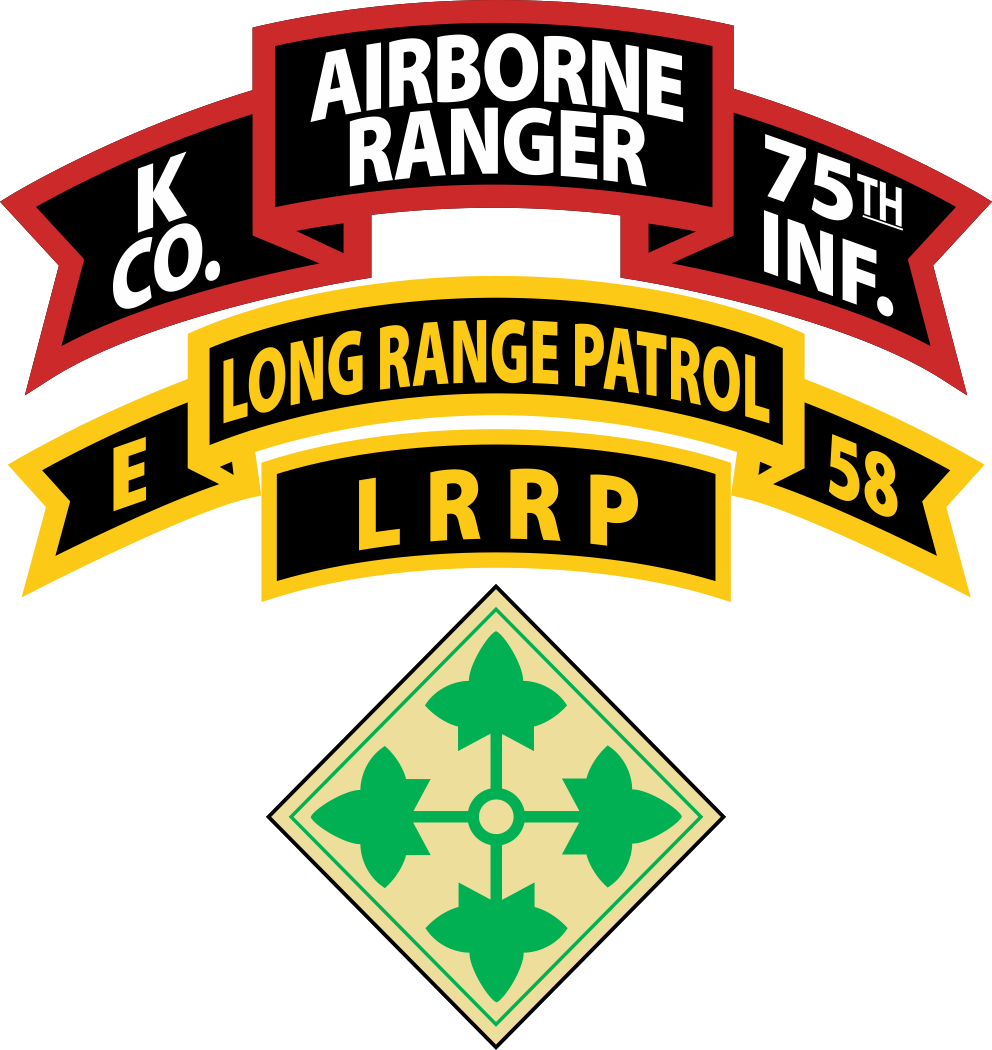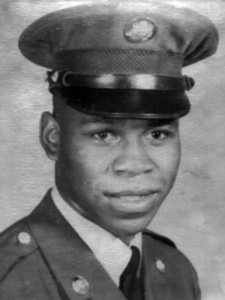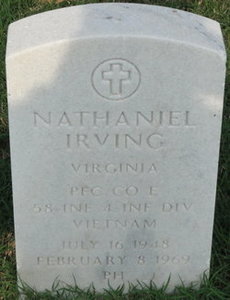Nathaniel Irving
PFC – U.S. Army
4th Infantry Division – Company K (Ranger), 75th Infantry
16 July 1948 – 08 February 1969
Hopewell, Virginia
Panel 33W, Line 86
MILITARY DATA
Service: Army (Selective Service)
Grade at loss: E3
Rank: Private First Class
ID No: 52917976
MOS: 11B2P
Len Svc: 1 year
Unit: Company K (Ranger), 75th Infantry
CASUALTY DATA
Start Tour: 12/08/1968
Cas Date: 02/08/1969
Age at Loss: 20
Remains: Body recovered
Location: Pleiku, South Vietnam
Type: Hostile, ground casualty
Reason: Gun, small arms fire
GRAVESITE
City Point National Cemetery, Hopewell, Virginia
Link to Remembrances:
https://www.vvmf.org/Wall-of-Faces/25136/NATHANIEL-IRVING
https://www.thewall-usa.com/guest.asp?recid=25161
| * * *
Four days after the Rangers were activated, on 05 February 1969, Company K team 3-C with Nathaniel Irving was inserted to monitor a jungle river valley in Pleiku Province. Patrol leader Sgt. Kenneth Hess radioed on the second day that he was feeling ill, but declined extraction. On the morning of 08 February, the four-man patrol reported that everything was normal and they were waiting at the pickup zone. No further contact was ever made, and aircraft searches failed to locate the team. On 10 February, two companies of the 1st Battalion, 35th Infantry, were landed in the area. On the following morning, the advancing infantrymen mistook Ju Hmok – the missing patrol’s Montagnard scout – for a “wounded but armed NVA soldier” and killed him at a distance. That same day, the aero rifle platoon found the remains of Pfc. Nathaniel Irving, and a grave containing the body of Sgt. Hess. Eight days later, the 35th Infantry captured NVA Sgt. Do Van Luong of the 95B NVA Infantry Regiment. The captive stated that a wounded American wearing tiger-striped camouflage, with reddish-brown hair and a mustache, was being carried on a stretcher to the North Vietnamese B-3 Front headquarters. The description of the prisoner matched Pfc. Don A. MacPhail – who was returned after the 1973 cease-fire agreement.
|
||||
Submitted by Sgt. John Serrano, Company K team 3-C.
15 July 2000
I was there and in the same Company K.
Sgt. Kenneth Hess was a good friend of mine, as well as the other team mates. The Montagnard (Ju Hmok) that was killed by friendly fire was right. Pfc. Nathaniel Irving was killed in a way that only a NVA would kill like a (Butcher). Yes he was butchered. The reason we didn’t get any radio contact, was because a grenade had landed between Sgt. Hess’s neck and the radio. That’s why we had lost radio contact.
If you knew the NVA and their ways, you would know that they never put anyone in a grave.
The part about Pfc. Don A. MacPhail was right. He was a POW and then returned in 1973. The Montagnard (Ju Hmok) was also my scout. I had let him stay behind because he had just gotten married, but they needed a scout so they took Ju Hmok. Sgt. Hess only had two weeks to go before he was to go home.
Of all the things that happened over there, that I won’t forget and also what had happened to team 3-C.


